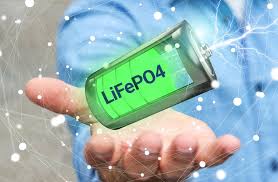The Impact of Temperature on Lithium-Ion Battery Performance
Lithium-ion batteries have become the standard in various applications, from powering electric vehicles to supporting portable electronics. However, their performance is significantly influenced by environmental factors, with temperature being a critical parameter. This article explores the impact of temperature on lithium-ion battery performance, examining both positive and negative effects and highlighting strategies to optimize their operation across a range of temperatures.

1. Understanding the Temperature Sensitivity:
- Ideal Operating Range:
Optimal Performance: Lithium-ion batteries exhibit optimal performance within a specific temperature range, typically between 20°C to 25°C (68°F to 77°F).
Temperature Limits: Operating outside this range can lead to diminished efficiency and potential long-term damage.
- Temperature-Dependent Reactions:
Electrochemical Processes: Battery performance relies on electrochemical processes, and these reactions are temperature-dependent.
Kinetics of Charging and Discharging: The kinetics of charging and discharging reactions vary with temperature, impacting the overall efficiency of the battery.
2. Effects of Low Temperatures:
- Reduced Capacity:
Increased Internal Resistance: Low temperatures result in increased internal resistance within the battery.
Capacity Loss: This elevated resistance limits the flow of ions, leading to a reduction in the battery’s capacity.
- Sluggish Electrochemical Reactions:
Slower Charging and Discharging: At lower temperatures, electrochemical reactions occur more slowly.
Impact on Power Output: This sluggishness can result in reduced power output, affecting the performance of devices or vehicles, especially in cold climates.
- Risk of Lithium Plating:
Formation of Solid Lithium: Extremely low temperatures can cause the formation of solid lithium on the battery anode, leading to a phenomenon known as lithium plating.
Safety Concerns: Lithium plating poses safety concerns and can compromise the long-term functionality of the battery.
3. Challenges in High Temperatures:
- Accelerated Aging:
Chemical Reactions at Elevated Temperatures: High temperatures accelerate chemical reactions within the battery.
Shortened Lifespan: This acceleration can lead to a shortened lifespan, reducing the number of charge-discharge cycles the battery can undergo.
- Thermal Runaway Risk:
Increased Heat Generation: High temperatures can increase heat generation during battery operation.
Thermal Runaway: In extreme cases, this heat can lead to thermal runaway, a chain reaction of overheating that can result in catastrophic failure.
- Capacity Fade:
Electrode Degradation: Prolonged exposure to high temperatures can cause electrode degradation.
Gradual Capacity Loss: This degradation contributes to capacity fade, where the battery gradually loses its ability to hold a charge over time.
4. Optimizing Battery Performance Across Temperatures:
- Thermal Management Systems:
Active Cooling and Heating: Advanced thermal management systems, including active cooling and heating, help regulate battery temperature.
Enhancing Efficiency: These systems maintain the battery within the optimal temperature range, enhancing its overall efficiency.
- Insulating Battery Packs:
Minimizing External Temperature Influence: Insulating battery packs can help minimize the impact of external temperatures.
Improved Stability: This approach enhances the stability of the battery’s internal environment.
- Temperature-Adaptive Charging:
Adapting Charging Protocols: Implementing temperature-adaptive charging protocols adjusts the charging voltage and current based on the battery’s temperature.
Preventing Lithium Plating: This helps prevent issues like lithium plating during cold weather charging.
5. Application-Specific Considerations:
- Electric Vehicles (EVs):
Range Anxiety Mitigation: In EVs, temperature control is crucial to mitigate range anxiety associated with reduced battery efficiency in extreme temperatures.
Preheating and Cooling Strategies: Preheating or cooling the battery while the vehicle is plugged in optimizes its temperature before use.
- Portable Electronics:
Smart Charging Algorithms: Portable devices often utilize smart charging algorithms that consider temperature conditions.
User Guidance: Providing users with guidance on optimal temperature conditions for device use helps preserve battery life.
6. Future Developments:
- Advanced Battery Materials:
Improved Thermal Stability: Ongoing research focuses on developing battery materials with improved thermal stability.
Reducing Sensitivity to Temperature Extremes: These advancements aim to reduce the sensitivity of lithium-ion batteries to both low and high temperatures.
- Innovations in Thermal Management:
Efficient Cooling and Heating Systems: Innovations in thermal management systems aim to provide more efficient cooling and heating solutions.
Integration with Battery Electronics: Integrated systems that work in tandem with battery electronics for real-time temperature control are being explored.
7. Conclusion: Navigating Temperature Challenges for Optimal Performance:
Understanding and addressing the impact of temperature on lithium-ion battery performance is vital for optimizing their efficiency, safety, and longevity. As these batteries continue to power a wide range of applications, from electric vehicles to everyday electronics, ongoing research and technological advancements in thermal management systems and battery materials are key to overcoming temperature-related challenges. By implementing effective strategies for temperature control and considering application-specific needs, the potential of lithium-ion batteries can be harnessed to its fullest, ensuring reliable performance across diverse operating conditions.






